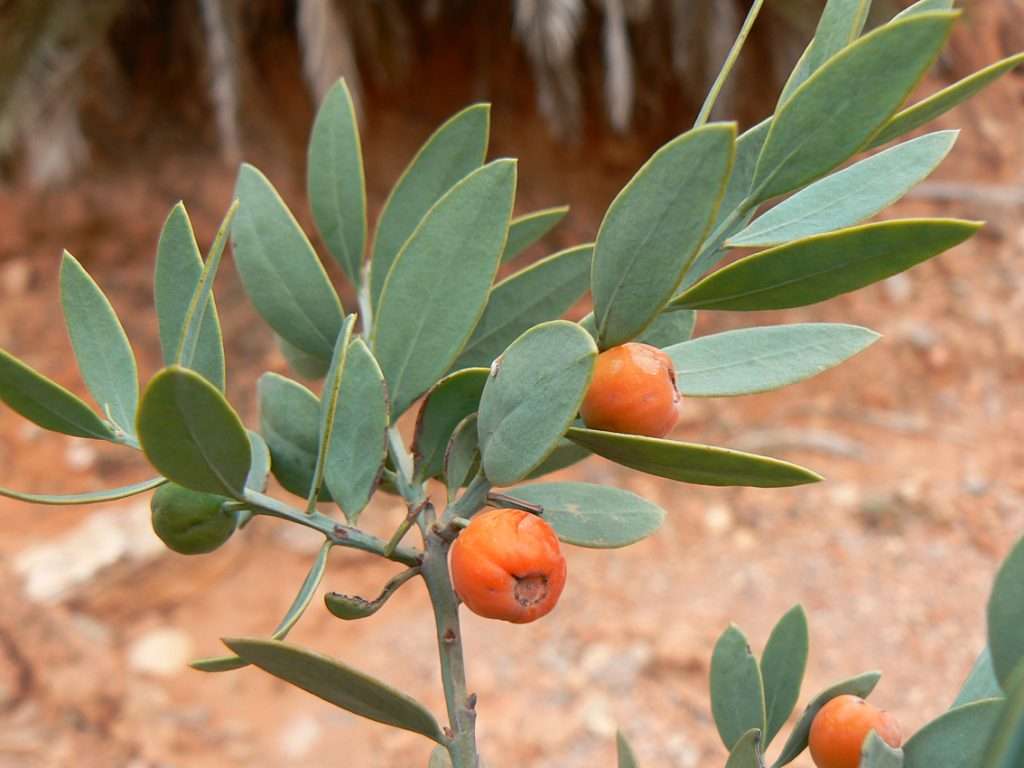The East Africa Sandalwood (Osyris lanceolate) is an endangered tree species and if not conserved will soon be extinct. Osyris lanceolata illegal harvesting continues despite having a ban in Kenya. Unsustainable harvesting of this resource may lead to loss of biodiversity and source of medicine among various communities. Sandalwood does not grow communally due to its slow growth.
Sandalwood is a semi-parasitic plant deriving nutrients from its host plant. Its roots, Sucking roots, or haustoria penetrate the host plant. Sandalwood can connect with its host plant at a distance of 3 meters. Acacia sp is among a number of the simplest host plants for sandalwood.
History of Sandalwood Overexploitation in Kenya.
Overexploitation of Sandalwood increased recently due to its high demand in the international market for oil and cosmetic production. According to the Convention on International Trade in Endangered Species of Wild Fauna and Flora (CITES), Sandalwood over-exploitation in Kenya dates back to 2006. The unsustainable harvesting has seen the tree on International Union for Conservation of Nature’s Red List of Threatened Species.
What stimulates Sandalwood overexploitation
The high demand for Sandalwood oil especially in Asia is fueling the overexploitation of this resource. For instance, in Asia, most cultural and religious ceremonies use sandalwood oils hence its high demand. It has other uses such as traditional medicine and as an ingredient in cosmetics. One liter of Sandalwood oil is valued at approximately $3,000 while one kilogram costs approximately $150.
In Kenya, unsuspecting local youths and traditional tree experts are employed to aid in the illegal harvesting and later help in transportation and storage. Despite its high value, the locals receive $3 per kilogram.
The most sought is the female plant due to a belief that it yields a high volume of oil. Although the oil is in the trunk, it is more in the roots. Complete destruction of the plant occurs.
Conservation Efforts in Kenya
Kenya banned the harvesting of Sandalwood in 2007 but its illegal harvesting proceeded. In 2013, the Wildlife Conservation and Management Act listed Sandalwood as an endangered species in Kenya.
- Anna Wiernicki Bio, Wiki, DC Now News, Age, Education, Family, Children, Husband, Net Worth, and Career
- Chris Tomer bio, wiki, age, children, wife, net worth, career.
- Deacon Philippe Bio, Wiki, Never Have I Ever season 3, Age, Education, Height, Family, Wife, Children, and Career
- Prince Harry age, early life, wife, children, books, career, net worth.
- Leslie Van Houten age, husband, children, imprisonment, death.
- Tim Franks Bio, Wiki, BBC London, Age, Education, Height, Family, Wife, Children, and Career
- Beverly White Bio, Wiki, NBC4-KNBC, Age, Education, Family, Children, Husband, Net Worth, and Career
Through Kenya Forestry Research Institute (KEFRI), Kenya is devising methods to propagate Sandalwood for its conservation. The institute collects seeds and propagates the tree. Grading of the seeds is completed using the floatation method. Marcotting is another technique done to propagate sandalwood. According to Peter Gachie ring debarking is done on a healthy branch and rooting media mixed with rooting hormones and antifungals is wrapped around the ringed zone. After two or three months roots develop and the plant is translocated into the field. Marcotting has the advantage of selecting the sex of the seedlings.
Communities also participate in conserving Sandalwood through agroforestry. KEFRI provides these communities with technical expertise in managing their trees.

Challenges of Conserving Sandalwood in Kenya
Like any other conservation activity, conserving Sandalwood (Osyris lanceolata) has its fair share of challenges. Among them is improper awareness among communities and ban enforcement officers. Poachers take advantage of this loophole to overexploit sandalwood.
Despite Kenya banning the harvesting of Sandalwood, industries handling and processing sandalwood are within its neighborhood. This means poachers will have an easy market that is within reach.
Common names in several ethnic groups in Kenya include;
- Munyungamai, Kithawa(Kamba),
- Mutero (Mbeere),
- Olosesiyet (MAA),
- Kijulu (Taita),
- Kepurwet (Kipsigis),
- Jemokabyl (Marakwet)
- Mũthĭthĭi (Kikuyu).
- The best private primary schools in Nyeri county.
- A list of special secondary schools, and contacts.
- List of Best private secondary schools in Nairobi County.
- Kenya Institute of special education, courses.
- What is the history of Kenyatta University?
- Mount Kenya University history, fees, courses
- Best Public High Schools in Kiambu County.